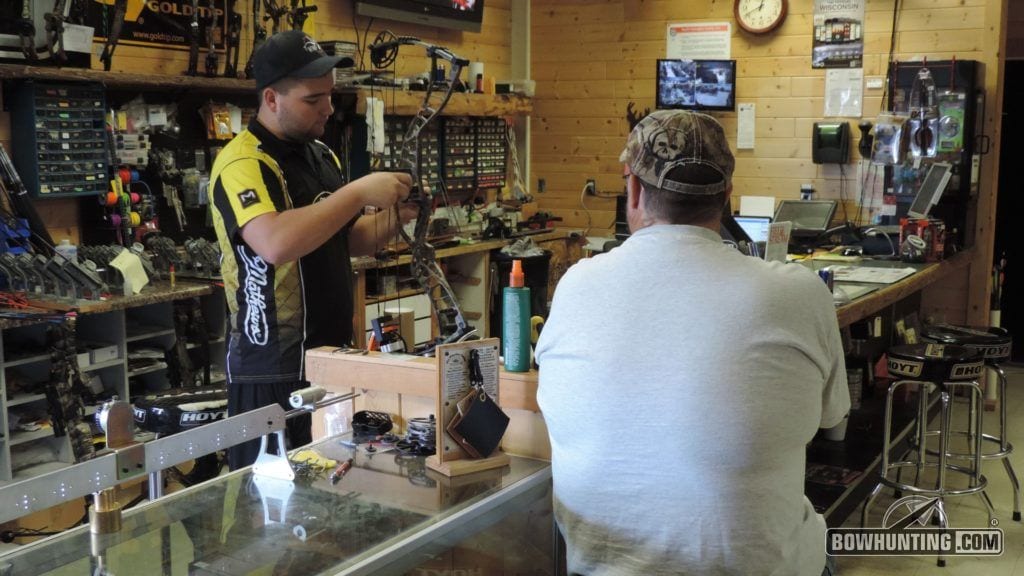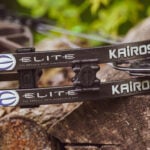Bowhunters with tight budgets often fall for snazzy ads or commercials that promote expensive, high-end equipment. They misconceive that having the highest-priced bow, arrows and accessories will make them better hunters. That belief is false and couldn’t be farther from true. Still, many bowhunters proceed to outspend their budgets anyway.
I worked at an archery pro shop for 10 years, so I’ve dealt with budget bowhunters hundreds – if not thousands – of times. Rather than stretch their finances through deceiving sales pitches, I helped them choose top-performing equipment within their financial means.
If you’re on a budget, buy the best you can afford, but don’t overspend, regardless of persuasive ads or a buddy’s coaxing. With a budget setup, you can be as successful as those toting a $2,000 tricked-out rig. But, you must select your bow and accessories carefully.
Let’s review – piece by piece – what you should look for in a budget-friendly bow rig.

Bowhunters can be as – or more – successful with a budget bow setup as bowhunters toting a $2,000 tricked-out rig.
The Budget Bow
The bow is where most budget bowhunters overspend. Then, they settle for mediocre accessories. In my eyes, this is a big mistake. If given $800 to spend on an entire rig, I’d choose a bow no higher than $400-$450. The bow is important, yes, but quality accessories are far more important. For example, if you accidentally drop your bow on rocks, a plastic sight likely won’t hold up. The bow, whether $400 or $800, probably will, depending on the drop’s severity. My point is that an expensive bow is no more useful with a busted rest or sight than a value-priced bow. Buy a good bow, yes, but buy great accessories.
With that in mind, choose a low-end or middle-of-the-road bow from any reputable manufacturer, and you’ll shoot it well if outfitted with quality accessories. Several brands to consider are Bear, Hoyt, Mission, Quest and Diamond, to name several.
Far more crucial than choosing a brand is trying out several bows before buying to find one that truly fits you and your shooting style. Regarding fit and feel, the grip is the most important consideration. If you purchase a bow with a forsakenly uncomfortable grip, you’ll struggle to shoot it consistently, and your accuracy will suffer.
Next, the bow must balance extremely well. If you’re a beginner, this may be difficult to identify, but a pro-shop technician can work with you and explain what you should look for.

If you’re unsure how to tell if a bow fits you properly, rely on a pro-shop employee to explain things like how the grip should fit and how the bow should balance. This will help you choose the best-fitting bow within your budget.
Sight
A quality sight is one made of durable carbon or machined aluminum. Sounds expensive, right? It can be, but the market is full of affordable options with said construction. Again, buy a name-brand sight for roughly $100, and you’ll do great. Many sights are priced much higher, and some considerably lower. Look for a sight that combines quality construction and reasonable pricing. Several notable sight manufacturers with such sights are HHA, Axion, TruGlo, Spot-Hogg and Trophy Ridge, among others.
You also must choose between several pin configurations sight manufacturers offer. For beginners, a moveable single-pin option is least confusing, especially at the moment of truth. For experienced bowhunters who position stands or blinds where shot distances vary, a multiple-pin sight speeds shot time. In other words, pins set for 20, 30 and 40 yards – in some cases, farther – enable bowhunters to zap their target animal without the additional time and movement of adjusting a single-pin sight. Choosing between the two styles really becomes a matter of experience, personal preference and the applications in which the sight will be used.
Rest
After tuning thousands of bows, I find drop-away arrow rests set the standard for optimal arrow flight. Many reputable brands make them, but I specifically look for one that really cradles my arrows, and has few mechanics or moving parts that can potentially malfunction. My favorites are free-fall designs equipped with a power cord that attaches to the downward-traveling cable. I also prefer that the mounting plate butts up against the back of the bow riser, or has a set screw to hold the rest in place during bumps and spills. Again, the idea is to buy the best you can afford.
Of course, other rest designs work, but the longer an arrow contacts the launcher, the less forgiving it will be. If I were penny-pinching, I’d steal from my quiver budget to spend more on a rest, especially since I’m a traveling bowhunter. Your rest plays a major role in each shot you take. Don’t skimp.

A pro-shop technician can not only help you choose accessories relative to your budget, but also ensure they’re installed properly so your setup performs optimally.
Arrows
A bowhunter’s anticipated shooting range depicts which arrows to buy. Most all-carbon arrows perform admirably at 30 yards and in. Beyond 30 yards, arrows with mediocre tolerances will expand groups, especially with broadheads attached. If you intend to shoot out to and beyond 40 yards regularly, choose arrows with straightness tolerances of .003 inch or better. These will perform to expectations, and many companies offer them affordably. Spend less if you’re a 20-yard bowhunter. Spend more if you’re a 40-yard bowhunter.
Broadheads
During a recent farm-supply store visit, I was amazed to find a 3-pack of expandable broadheads for $11.99. After inspecting them closely, I know they could reliably kill any big-game animal. Would I choose them? Probably not, but only because I question the ferrule straightness based on their cheapness. Again, if you’re shooting close ranges, inexpensive broadheads like these will serve you well as long as they’re sharp and don’t have problematic designs. Choose a broadhead you trust that also falls within your price range, and shoot it a few times before you hunt to make sure it flies like your field points.
Quiver
Whether you shoot with your quiver on or off decides how much you should spend on one. I do a mix of treestand, ground-blind and spot-and-stalk hunting, so I can’t predict when I’ll shoot with it on or off. Thus, I spend enough money to ensure I get a rock-solid quiver that doesn’t rattle when I shoot. I also look for one that’s plenty light so it doesn’t botch my bow’s balance. These attributes can be had for reasonable prices.

A bow setup need not break the bank. A bowhunter can easily be outfitted with everything for $600 – half the price of a high-end bow with basic accessories – as was the case with this Mission setup.
Stabilizer
I highly recommend using a stabilizer. You need not spend a fortune; simply choose one that balances your bow properly. Many stabilizers are designed more for sound and vibration dampening than stabilization. I disregard this as today’s bows are already quiet enough. I’m more concerned with getting a stabilizer that actually steadies my aim. This, of course, differs with each bow setup. The best way to find one that works for you is to visit an archery pro shop and try several on your bow. Like quivers, stabilizers need not swallow up your budget. Set a price limit, and select a model within it.
Don’t Wait
If you’re currently shopping for a budget bow setup, wait no longer to make a purchase. Fall is fast approaching, and like an expensive bow package, you must become familiar with it well before you head afield. Again, if you’re undereducated on the finer points of choosing a money-saver bow package, let a pro-shop technician guide you in choosing the best possible products without overspending your budget.

 By
By 



